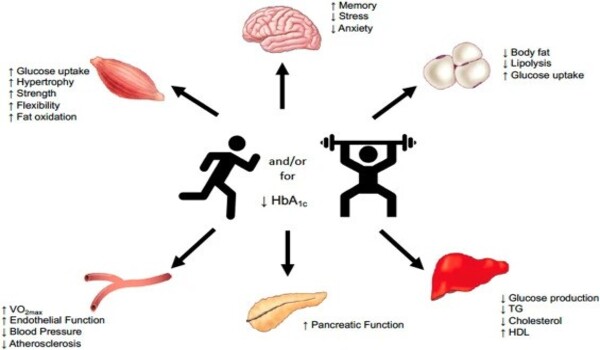A new study from the University of Eastern Finland is the first in the world to prove that a good diet and regular exercise lower the incidence of type 2 diabetes, even in people who are genetically predisposed. To put it another way, lifestyle improvements help everyone, regardless of genetic risk.
Type 2 diabetes is a global issue. According to the International Diabetes Federation (IDF), one in every eleven persons worldwide has diabetes, with type 2 accounting for 90% of occurrences. To date, researchers have found over 500 genetic variations that predispose people to type 2 diabetes, but lifestyle factors also influence the risk of the condition. Significant lifestyle-related risk factors include overweight, low intake of dietary fibre, high intake of saturated fats, and lack of exercise.
Previous studies have shown that type 2 diabetes can be effectively prevented by lifestyle changes, but it has not been explored whether the disease can be prevented even in individuals carrying numerous genetic variants that predispose them to type 2 diabetes.
These findings encourage everyone to make lifestyle changes that promote health. Furthermore, they demonstrate the effectiveness of group- and internet-based lifestyle guidance, which saves healthcare resources.
Docent Maria Lankinen
The T2D-GENE Trial was a three-year lifestyle intervention involving approximately 1,000 men aged 50 to 75 from eastern Finland. At the start of the trial, all participants had high fasting glucose levels. More than 600 men participated in the lifestyle intervention group, while the remaining men acted as controls. Men in the intervention group were given advice on health-promoting practices during group meetings, and they were assisted by a web portal created specifically for the study. Those invited to the trial were either in the lowest or highest tertile of genetic risk, meaning they had a high or low probability of acquiring type 2 diabetes.
Genetic risk was determined based on 76 gene variants known to predispose to type 2 diabetes. During the intervention, neither the study participants nor the researchers knew to which genetic risk group the participants belonged. All those who participated in the intervention received the same lifestyle guidance.

Men who participated in the lifestyle intervention saw significant improvements in the quality of their diets. They boosted their intake of dietary fibre, improved the quality of fats in their diet, and consumed more vegetables, fruits, and berries. Weight reduction was also noted, albeit this was not a true weight loss research.
The participants were already physically active at baseline, and they were able to continue their healthy exercise habits throughout the study. These adjustments made it feasible to slow the impairment of glucose metabolism. The prevalence of type 2 diabetes was considerably lower in the lifestyle intervention group compared to the controls. The effects of lifestyle changes were equally significant for individuals regardless of whether they had a low or a high genetic risk.
“These findings encourage everyone to make lifestyle changes that promote health. Furthermore, they demonstrate the effectiveness of group- and internet-based lifestyle guidance, which saves healthcare resources,” says University Lecturer, Docent Maria Lankinen of the University of Eastern Finland, the first author of the study.















